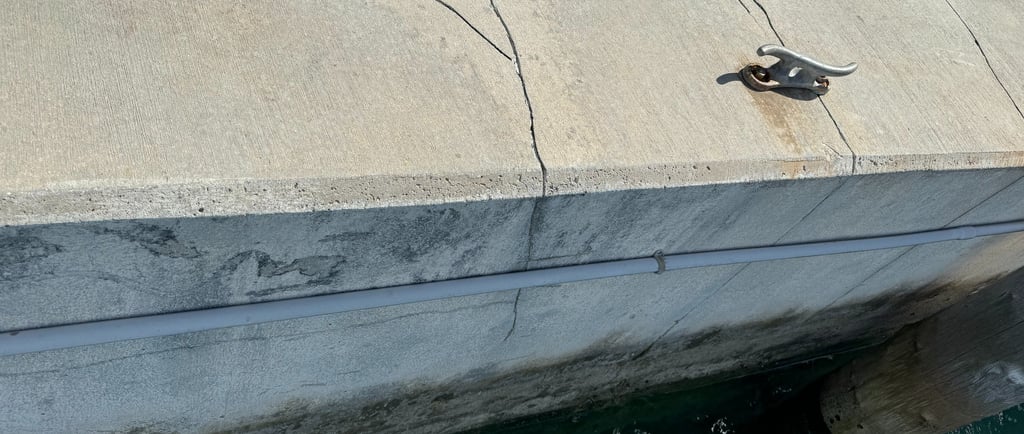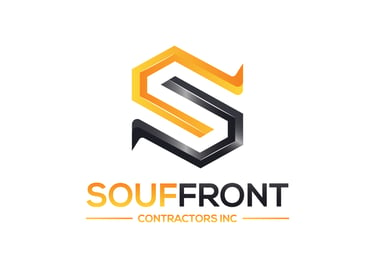Expert Engineering Reports for Comprehensive Seawall Inspections, Repairs, and Full Construction.
Comprehensive Guide to Seawall Construction After Hurricane Damage
Seawall construction post-hurricane involves a combination of engineering expertise, regulatory compliance, and specialized materials to ensure long-lasting protection.
11/8/20244 min read


Comprehensive Guide to Seawall Construction After Hurricane Damage
Seawalls are critical structures that protect coastal properties from erosion, storm surges, and tidal forces. After a hurricane, these structures often suffer damage and may require repair or complete reconstruction. Seawall construction post-hurricane involves a combination of engineering expertise, regulatory compliance, and specialized materials to ensure long-lasting protection.
In this guide, we'll walk through the steps of seawall construction after a hurricane and address frequently asked questions (FAQs) about the process. For a deeper breakdown of the inspection phase before construction begins, you can review the complete seawall inspection process.
1. Assessment of Damage
Before starting any repair work, a professional evaluation of the seawall’s condition is essential. This includes:
Inspection of Visible Cracks: Cracks, particularly those below the waterline, can be signs of structural failure.
Soil Erosion: Examine soil displacement behind the seawall. Erosion can lead to structural instability.
Foundation Integrity: Hurricanes can undermine the seawall's foundation, requiring deeper investigation.
Once damage is assessed, the contractor can determine whether a repair, partial rebuild, or complete reconstruction is needed. Once damage is assessed, the contractor can determine whether a repair, partial rebuild, or complete reconstruction is needed. For a more detailed comparison of both options, you can visit: seawallinspectionpro.com/seawall-repair-vs-replacement.
2. Permitting and Regulatory Compliance
Seawalls are often subject to local, state, and federal regulations, especially in hurricane-prone regions. Permits are typically required for repair or new construction.
Environmental Impact Studies (EIS): In some cases, an EIS may be necessary to ensure the project won't harm marine ecosystems.
Building Codes: Contractors must follow state building codes, such as the Florida Building Code, to ensure that seawalls are strong enough to withstand future hurricanes.
Federal Permits: In the U.S., coastal seawalls might require approval from agencies like the Army Corps of Engineers, depending on location and project size.
3. Seawall Design and Engineering
After the damage is assessed and permits are acquired, the next step is designing the new seawall. This often involves:
Material Selection: Concrete panels, steel sheets, and vinyl are commonly used in seawalls. Each material has pros and cons in terms of durability and cost.
Wave Energy Considerations: Seawall designs may vary depending on wave energy in the area. For hurricane-prone areas, curved or stepped seawalls are often recommended to deflect storm surges.
Tiebacks and Anchors: In hurricane-damaged areas, contractors may prefer a design without tiebacks to avoid future soil erosion issues, using methods such as cantilevered or gravity-based designs.
4. Construction Process
The construction phase depends on the extent of the damage and the design chosen. Typical steps include:
Demolition of the Old Seawall: If the seawall is beyond repair, the damaged structure will be removed.
Excavation and Piling: Soil will be excavated to set a strong foundation, and piling or deep anchors may be installed to ensure stability.
Placement of Panels or Sheets: Depending on the material, concrete panels or steel sheets are placed and secured in place.
Backfilling and Drainage Systems: Once the wall is in place, the area behind the seawall is backfilled, and a proper drainage system is installed to prevent water buildup that could compromise the wall.
5. Post-Construction Monitoring
Even after the construction of a new seawall, periodic inspections are essential. Post-hurricane seawalls are often subjected to additional scrutiny to ensure they hold up against future storms.
Routine Maintenance: Scheduled inspections will help catch early signs of deterioration.
Erosion Control: Monitoring of the surrounding land and underwater environment is important to maintain the seawall’s integrity.
Frequently Asked Questions (FAQ) About Seawall Construction After Hurricane Damage
Q1: How long does it take to repair or rebuild a seawall after a hurricane?
A: The timeline depends on the severity of the damage, the length of the seawall, and permitting processes. For a simple repair, the process can take a few weeks, while a complete rebuild might take several months.
Q2: What materials are best for seawall construction in hurricane-prone areas?
A: Concrete is the most durable and commonly used material, but steel and vinyl can also be effective. Reinforced concrete is often recommended for areas facing frequent storms.
Q3: How much does it cost to repair or replace a seawall?
A: The cost varies widely depending on factors like the length of the seawall, materials used, and labor. On average, seawall construction costs range from $150 to $600 per linear foot. For post-hurricane projects, costs can increase due to additional challenges.
Q4: Do I need a permit to repair a seawall after a hurricane?
A: Yes, permits are almost always required for any seawall repair or construction. Local, state, and federal agencies may all need to approve the project, especially in environmentally sensitive areas.
Q5: Can I make temporary repairs to a seawall before a full rebuild?
A: Temporary fixes such as patching cracks or adding support can be made, but these are often only stop-gap measures. For long-term protection, a full repair or reconstruction is recommended.
Q6: What happens if I don’t repair my damaged seawall?
A: A damaged seawall can lead to severe property erosion, loss of land, and increased vulnerability to future storms. Over time, neglecting seawall repairs can cause more expensive property damage.
Q7: What alternatives to seawalls exist for protecting my coastal property?
A: Alternatives include living shorelines, which use natural elements like plants and rocks to stabilize the shoreline, or revetments, which are sloping structures that absorb wave energy. However, these options may not be as effective in hurricane-prone areas.
Q8: Can insurance cover seawall repair or replacement?
A: It depends on your policy. Some homeowners' insurance may cover seawall damage, but it's important to check the terms of your policy. Special coverage might be needed for hurricane-related damage.
Rebuilding a seawall after a hurricane is an essential step in protecting coastal property from future storms. By working with professionals, ensuring proper design and engineering, and complying with regulations, you can ensure the long-term stability of your property.
© 2012-2024 Souffront Contractors & Engineers | All Rights Reserved
Estimates@souffrontcontractors.com
Phone: 877-420-7220
© 2024. All rights reserved.


